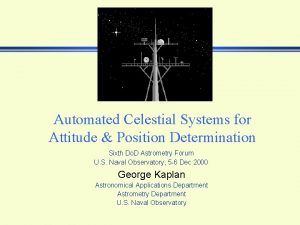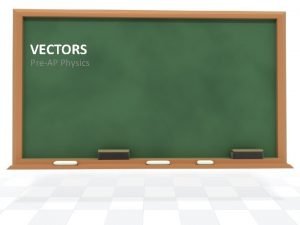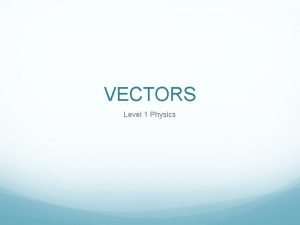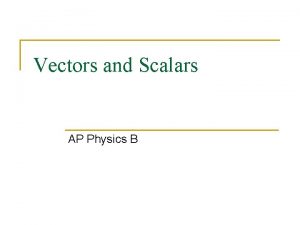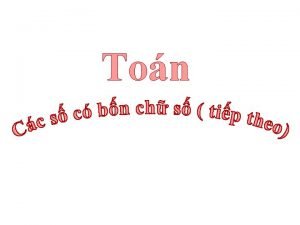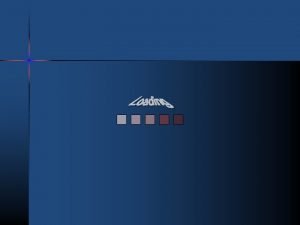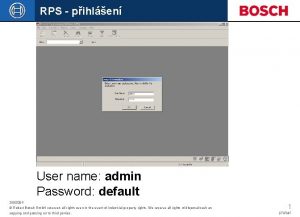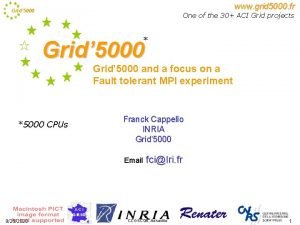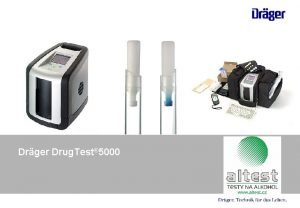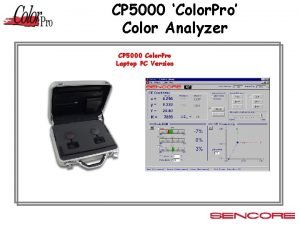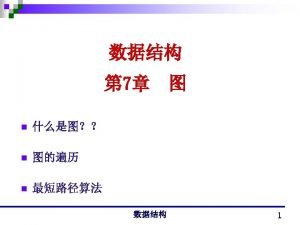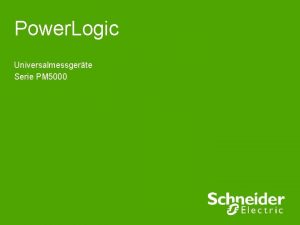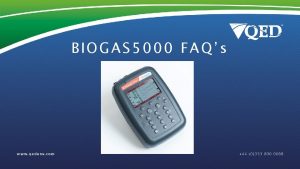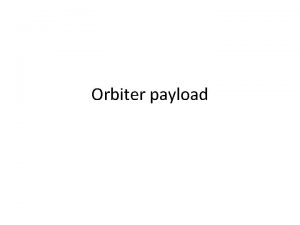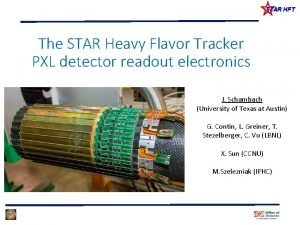Star Tracker 5000 A lowcost star tracker and










- Slides: 10

Star Tracker 5000 A low-cost star tracker and attitude determination system

Tracking Performance • • • ST 5000 tracks at 10 Hz 3 -axis tracking, Yaw, Pitch & Roll In-flight performance on sounding rocket flight 36. 220: RMS tracking error in yaw and pitch: 0. 54 arcseconds. RMS tracking error in roll: 17 arcseconds RMS errors depend on stars in the FOV: one flight had tracking errors > 3” for sparse, faint fields Tracking

Attitude Determination • • • Our “lost in space” mode uses an on-board star catalog of 38400 stars with V magnitudes between 4 and 8. ST 5000 can recognize where it’s pointing by analyzing star patterns Some other trackers can do this, but may take long (minutes) or provide low precision (many arcminutes) ST 5000 can solve its attitude in a few seconds, and is accurate to a few seconds of arc

Absolute Inertial Attitude • • • Absolute error in inertial attitude is driven by photon statistics & centroiding error 8 -star simulator test: assign a “known” attitude to the star pattern Repeatedly acquire & calculate inertial attitude Answer will vary according to “PSF jitter” Mean error was 1. 3” Standard deviation was 0. 6”

Image Compression from Jupiter • • • Discovery image of Dactyl, moon orbiting the asteroid Ida. The choice of jailbar spacing was fortuitous. NASA’s previous try at image compression Galileo Jupiter probe loses its high-gain antenna “Jailbar” compression almost loses Dactyl We need full-image quality over very slow connections UW invents and patents “Progressive Image Transmission” (Percival & White, #5, 991, 816)

Progressive Image Transmission Coma cluster, 800 x 16 bits, row by row at 2400 baud after 1 minute Same image, same conditions, using UW-Patented PIT

Spaceflight Quality Fabrication • • Sensor electronics shown above; control electronics are in a separate box that can be up to 4 meters away. We use commercial “off the shelf” parts where possible Our Electronics Technician has decades of experience building electronics for space flight Assemblies must withstand very-high vibration environments (20 g) High accelerations: the rocket can be supersonic in 1 -2 seconds

Testing at NASA • Air-bearing lab provides a frictionless float • Side by side, “A/B” testing • ST 5000 outperformed previously used tracker quieter signals, less valve activity • ST 5000 provided the first rollcontrol every achieved in the sounding rocket program

First NASA Flight • Our 1 st NASA ride - April, 2004 • 11 flights to date, 5 engineering tests & 6 science payloads • Progressive Image Transmission downlinks worked as designed

ST 5000 Status Summary • Licensed to Northrop Grumman (non-exclusive) • Working on a “Mark III” upgrade – – – Lower mass Lower power 35% reduction in obscuration Faster, newer CPU (10 x CPU speed, 32 x more storage) Redesigned sensor board and electronics • Our cost is about $100, 000 per unit for a “sub-orbital” level of design; commercial trackers suitable for orbital or interplanetary missions start at over $1, 000. Our “Mark III” design will address some of these design differences.
 Star of wonder star of night star of royal beauty bright
Star of wonder star of night star of royal beauty bright Automated celestial navigation system
Automated celestial navigation system A* and ao*
A* and ao* What does star events stand for
What does star events stand for Policy 5000 training
Policy 5000 training A bear searching for food wanders 35 meters east
A bear searching for food wanders 35 meters east A storm system moves 5000 km due east
A storm system moves 5000 km due east 700 calories scalar or vector
700 calories scalar or vector 5000/200
5000/200 Dr 5000 spectrophotometer
Dr 5000 spectrophotometer Bosch fpa-5000 master password
Bosch fpa-5000 master password

